What is an online business, you ask? When I first heard the phrase “online business,” I imagined sipping coffee on a tropical beach while my bank account magically filled up. It’s not quite like that. But, close-ish! In reality, an online business means you can finally ditch the 9-to-5 grind, set your own hours (which usually involves working all the hours), and pursue your dreams of being your own boss. But what does it really mean?
In 2026, running an online business is the dream for those of us who would prefer to make a living without leaving the warm embrace of our Wi-Fi. From selling digital art to becoming an influencer (because apparently, that’s a job now), the possibilities are endless.
So, grab your laptop, put on your best “I’m totally working” face, and let’s dive into the wild world of online business where you can finally achieve the elusive work-life balance… or at least pretend to.

- •Understanding Online Business & its Benefits
- Types of Online Businesses
- •Challenges in Online Business
- Key Steps to Start an Online Business
- •Step 1: Identify Your Niche
- •Step 2: Conduct Market Research
- •Step 3: Create a Business Plan
- •Step 4: Choose Your Business Structure
- •Step 5: Register Your Business
- •Step 6: Build Your Website
- •Step 7: Comply With Legal Requirements
- •Step 8: Develop a Marketing Strategy
- •Step 9: Launch Your Business
- Profitable Online Business Ideas
- •Frequently Asked Questions
- •What Next?
Understanding Online Business & its Benefits
An online business is any business that operates on the internet, selling products, services, and sometimes dreams. Let us look at some of the many benefits of an online business:
Lower costs: They usually have lower running costs because you don’t need a physical store. You can work from home, a coffee shop, or even your mom’s basement – anywhere with internet.
Flexibility: You’re the boss. You get to decide when you work, where you work, who you work with, and what color your virtual office wallpaper is.
Scaling: Using digital marketing strategies, you can go from “unknown” to “everywhere” overnight.
Global Reach: And the best part? The internet never sleeps. While you’re drooling on your pillow and dreaming about being the next Jeff Bezos, your online business is still out there hustling, making you money and passive income while you snore. If that’s not the dream, I don’t know what is.
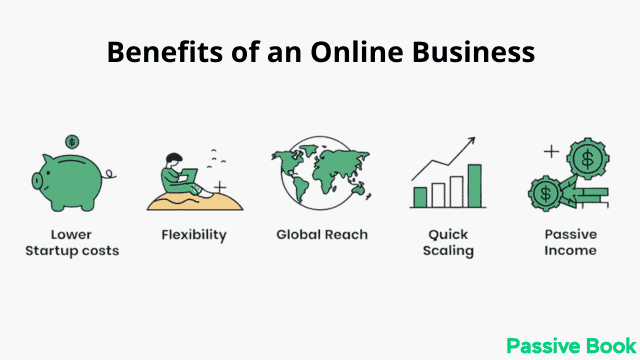
In the early days, selling physical products online was as simple as listing a few items on eBay. But now, the variety is endless. Now, they include everything from content creation to online courses and coaching.
Remember 2020? That year showed us just how much we rely on e-commerce, and it made up nearly 25% of global retail sales in 2025. Social commerce alone exceeded $1 trillion for the first time in 2024.
So, if you’re thinking about starting an online business, the time is ripe. Just remember to occasionally leave your house. The sun still exists out there.
Types of Online Businesses
Online businesses come in all shapes and sizes. Each type has its own unique features and ways to make money. Let’s take a look at the different kinds of online businesses you can start.
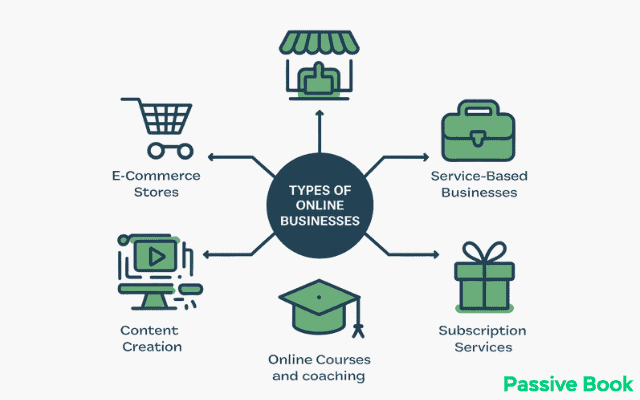
E-commerce Stores
E-commerce stores are magical websites (or apps) that let you browse, buy, and occasionally spend your entire paycheck without ever making eye contact with another human being. Places like Amazon have mastered this game, to the point where they’re essentially the overlords of online shopping. In 2023, Amazon sellers offloaded over 4.5 billion items. That’s 8,600 items a minute! Not to mention, more than 10,000 sellers became millionaires on Amazon in 2023, which is a nice reminder that some people are winning the internet money game. Meanwhile, my side hustle involves selling my sarcasm for free on social media.
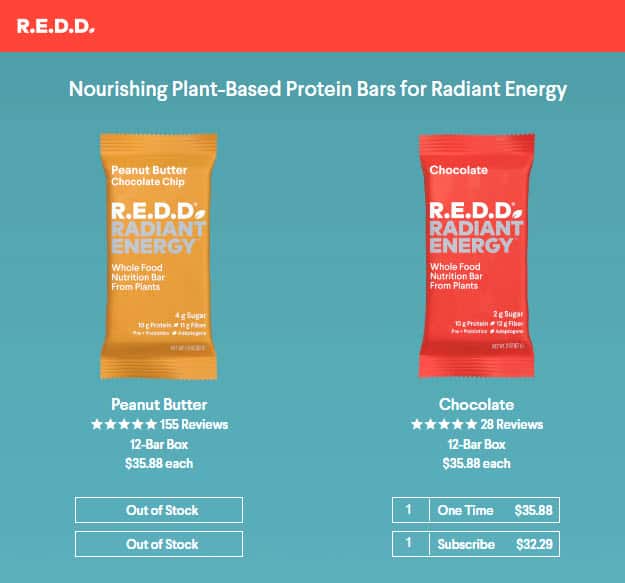
Now, if you’re thinking about starting your own digital store (and why not, I mean, millions in sales sounds fun, right?), you’ll need to pick your flavor of e-commerce. There are different models of ecommerce. First up is B2C—Business to Consumer. This is your classic “I sell you stuff, you buy stuff,” scenario. Then there’s B2B—Business to Business—because even businesses need their own shopping sprees. Finally, we’ve got C2C, or Consumer to Consumer. This is essentially the digital version of a yard sale, but with a touch more dignity and less of that “awkwardly lowballing your neighbor over a rusty lawn chair” vibe.
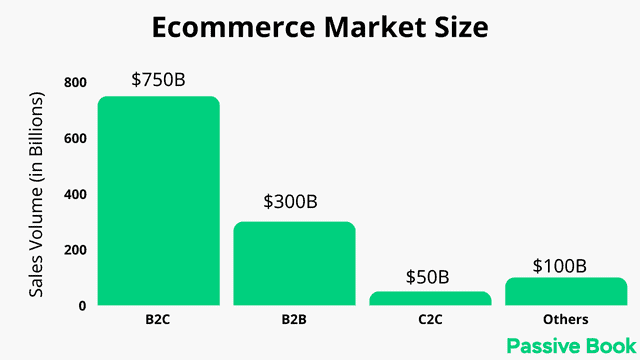
Once you’ve picked your path, you’ll need to decide what treasures to sell. Will you deal in physical products like clothes or fidget spinners (still a thing?), or go digital with e-books, stock photos, or maybe downloadable knitting patterns? Whatever it is, your key to success lies in social media—because nothing says “buy my stuff” like a well-placed Instagram post or a trending TikTok dance featuring your product. And don’t forget email marketing, the digital equivalent of nudging someone in the ribs and whispering, “Hey, remember me? I still sell things. Wanna buy something?”
In the end, understanding your customers is key. After all, even in the virtual world, no one likes that sketchy guy who won’t stop yelling about his “100% authentic” sunglasses.
Service-based Businesses
Service-based businesses provide various services over the Internet. It’s the gig economy, where all you need is a Wi-Fi connection, a semi-reliable laptop (that doesn’t crash too often), and a skill that someone, somewhere, might want to pay for.
The beauty of the service business is you can pretty much offer anything, as long as you can convince someone to pay you. Want to be an astrologer, guiding people through their cosmic confusion? Sure! Baby sleep training expert? Why not – sleep-deprived parents will throw cash at you if you can get their baby to nap for longer than 12 minutes. Language coach? You’re just a couple of conversational phrases away from changing lives. You can even write and sell poems.

Now, if you’re feeling a bit more mainstream, meaning you actually want to explain what you do without people giving you that look: there’s always freelance writing, graphic design, or becoming a virtual assistant. It’s like the trifecta of service gigs.
And the best part? There are platforms like Upwork and Fiverr just begging for your skills. OK, maybe not begging—but they are super helpful if you’re trying to sell your services without going door-to-door like it’s the 1800s.
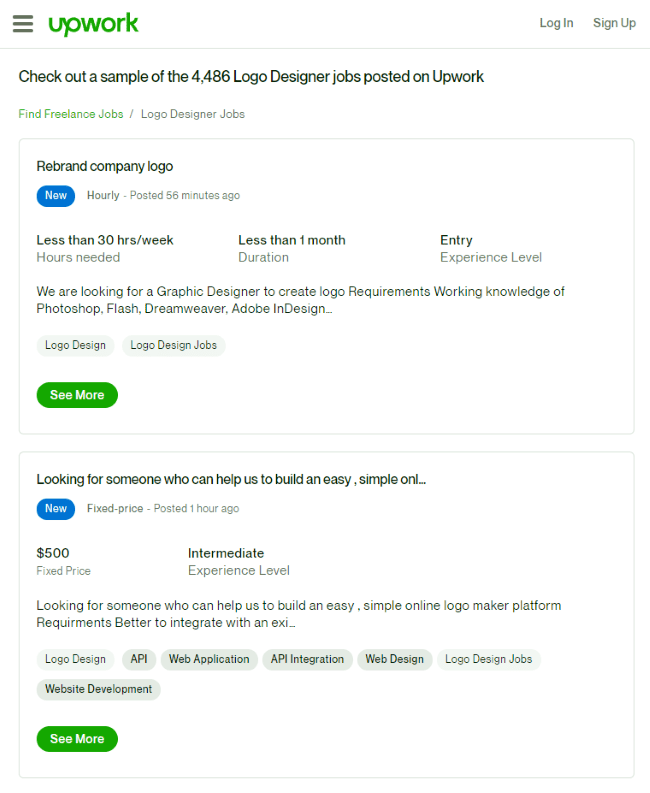
The digital marketing agency sector is also growing, with a market size of $60 billion in 2023 which is impressive, considering half of us can’t even figure out why we’re getting so many targeted ads for products we just thought about. (The algorithm knows. It always knows.).
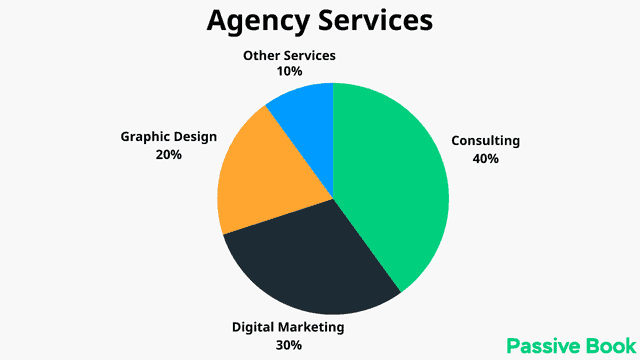
So, if you’re thinking about starting your own service-based business, here’s my advice: figure out what you’re good at—preferably something you can actually deliver without too much sweat and panic. Then, use the internet to connect with clients. Build your online presence, whether it’s through a website, social media, or by shouting into the void. You’ve got this. Probably.
Content Creation
Content creation is your ticket to making money by sharing your thoughts, questionable life choices and creations online. This can be done through blogs, YouTube channels, social media or podcasts.
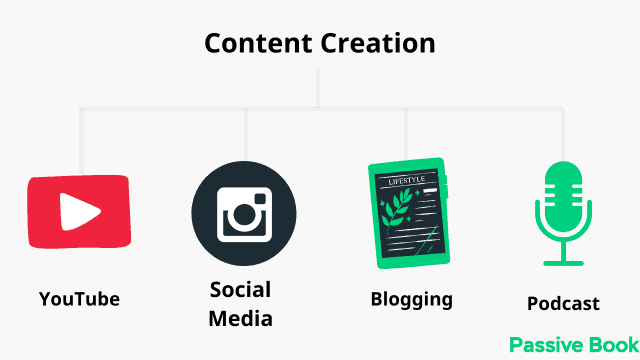
Currently, there are about 50 million content creators out there, which sounds impressive until you realize that’s roughly the population of Spain. So, if you want to stand out, you’re going to need more than just a cute cat video.
To make money from content creation, you can use various methods. One way is through ad revenue. Websites like YouTube show ads on your videos, and each time someone watches an ad, you earn a little cash. Sponsorships are another option, where a company pays you to promote their product in your content. Affiliate marketing is also popular—you earn a commission when someone buys a product through your special link.
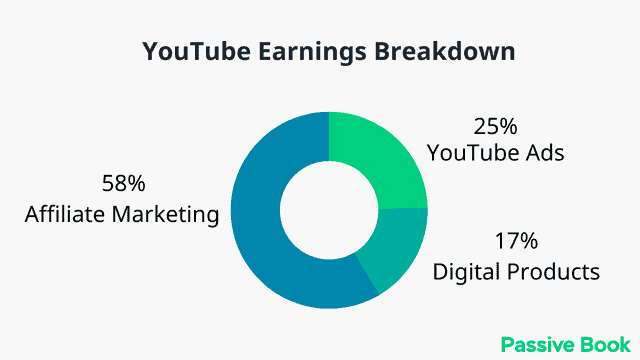
Catherine Manning made $23,324.16/month with her YouTube channel. Only 25% (or $5731.43) of her earnings came from YouTube ads. The remaining 75% (or $17,592.73) came from affiliate marketing and selling digital products. Check out the video below to learn more:
Of course, if you want to be one of the successful content creators (as opposed to the ones like me who write about content creation rather than doing it), you’ll need to build a strong online presence. This means engaging with your audience on social media, posting content that’s actually interesting (sorry, not everything can be about what you had for lunch), and maybe even throwing in some email marketing for good measure. The goal? Build engagement and get people to click, like, and share until their fingers go numb.
If you’re thinking of jumping on the content creation train, first ask yourself what you actually enjoy. Like, what could you rant about for hours without being paid? That’s probably the thing you should create content around. Start posting, experiment with different platforms, and once you’ve got a loyal following (or at least your mom and your dog), you can start exploring ways to monetize. Before you know it, you could turn this hobby into a full-blown online business. Or at least make enough for a fancy dinner. Both wins, in my book.
Online Courses and Coaching
Online courses and coaching are popular types of online businesses because everyone loves being a know-it-all. Many people want to learn new skills or improve themselves, and platforms like Udemy and Teachable makes it so easy to create and sell courses that even your neighbor’s cat could probably create a course on how to nap more effectively and make a tidy profit.

I launched one of my first courses on Udemy. After 10 years, I still get paid by Udemy every month when new students join this course.
Speaking of profits, the coaching market generated about $4.564 billion in 2023 and reached $6.2 billion in 2024. By 2032, it may grow to $11.7 billion, showing that people want help with personal and professional development. The life coaching market in the U.S. has an estimated size of $1.4 billion, with an annual growth rate of 3.2%. The global executive coaching market was valued at $9.3 billion in 2022 and is expected to reach $27 billion by 2032.
Trends like digital transformation and AI are changing the coaching industry, along with a growing focus on well-being. These factors keep the market alive and thriving. Online courses and coaching offer a great way for you to help others while building a successful online business.
Subscription Services
Subscription services are a popular way to sell products and services entirely online. Think of Netflix or subscription boxes. People enjoy the convenience of having items delivered to their door each month, much like a surprise gift from you to you. What will it be today? A gourmet snack box, a curated collection of artisanal socks, or the 47th skincare sample I keep forgetting to cancel?
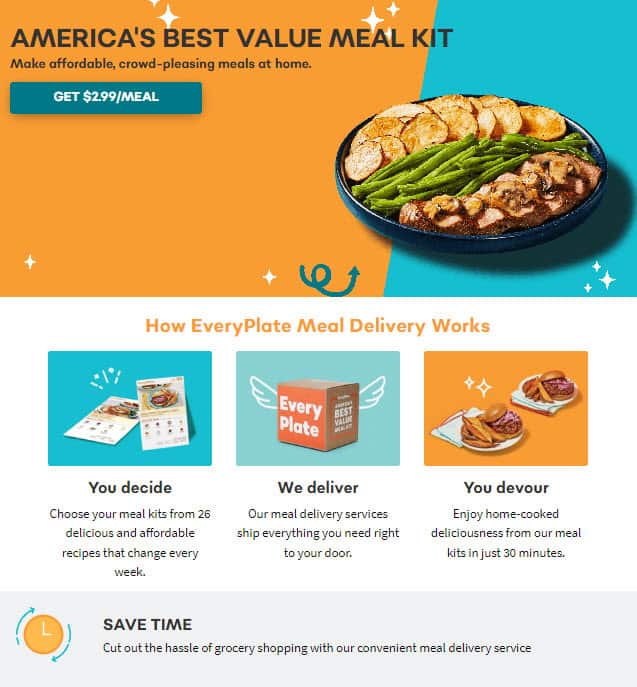
In 2023, the global subscription box market reached USD 32.9 billion, with experts predicting an annual growth rate of 14% until 2032. By then, it could be worth USD 105.4 billion. The United States alone saw its subscription box market valued at USD 15.4 billion in 2023, potentially growing to USD 44.5 billion by 2032. This growth is fueled by changing consumer behavior, with many people wanting personalized products and enjoying the variety and convenience subscription services provide.
What’s driving this meteoric rise, you ask? Well, it turns out people are just really into convenience, variety, and the illusion of choice. Social media is basically the hype man behind this, egging us on with “Swipe up for this box of artisanal gluten-free water you didn’t know you needed!” And of course, the whole e-commerce boom has turned starting your own subscription service into something you could probably do from a laptop at your kitchen table while eating one of your subscription snacks.
There are different types of subscriptions. Replenishment subscriptions offer essentials like snacks or toiletries. Curation subscriptions provide a selection of items based on personal tastes. Access subscriptions give members exclusive content or products.
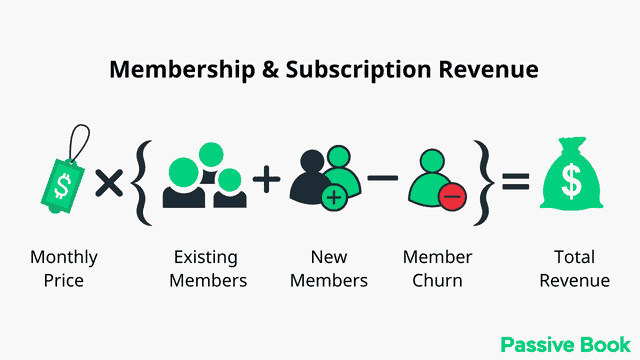
Thinking of starting your own subscription service? Well, you’re going to need more than just a catchy name and an Instagram account filled with photos of succulents and soy candles. You’ll need a website that doesn’t look like it was designed in 2003.
In the end, the subscription game is all about knowing your audience. Just make sure you’re giving them something they didn’t realize they absolutely, positively cannot live without—until it shows up on their doorstep, of course.
Hybrid Models
Hybrid models are like the best of both worlds, combining online and traditional business methods. They’re perfect for businesses that want to reach more customers without giving up their brick-and-mortar roots. For example, a grocery store might offer online ordering and delivery services, allowing customers to shop from home while still enjoying the convenience of a local store.
Traditional businesses everywhere are throwing themselves headfirst into this brave new world of online sales, enthusiastic but maybe not quite sure what they’re getting into. Restaurants are suddenly all about online reservations and delivery, which means your favorite spot can now bring you that greasy burger and fries, and you can eat it at home without the judgment of fellow diners.
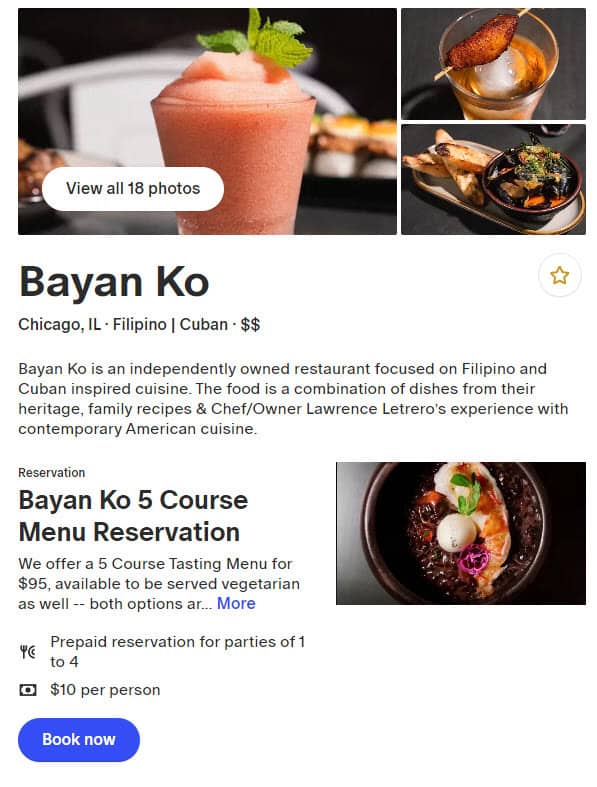
Meanwhile, your charming local bookstore is like, “Hey, why not sell e-books too? Less paper, more pixels, and fewer awkward customer interactions where someone asks if we have ‘50 Shades of Grey’ in stock… again.”
Starting a hybrid model can be a smart move for new business owners. It allows them to test the online market without losing their traditional sales. Plus, let’s face it, if Instagram taught us anything, it’s that everything can be marketed with the right filter.
Hybrid models are not just about selling products. They include providing services online too. Many businesses offer online courses or coaching, allowing them to connect with customers from anywhere. Why limit yourself to local customers when you can subject everyone to your brand?

In this digital age where people barely remember what going outside felt like, hybrid models are the key to success. They help businesses adapt to changing shopping habits. With the right marketing strategy, businesses can thrive in both online and physical spaces, leading to increased sales and a loyal customer base.
So, go forth, brave entrepreneurs—may your online dreams be vast and your physical store’s Wi-Fi strong.
Challenges in Online Business
Running an online business sounds glamorous—beachside laptop sessions, sipping lattes while your bank account magically fills up—but let me break it to you: it’s not all palm trees and passive income. It comes with its own set of challenges:
Competition: Many people want to start online businesses, making popular niches more crowded than a Black Friday sale. You must find ways to stand out.
Technical skills: You need to know how to manage a website and have a basic understanding of digital marketing. This is not rocket science which you cannot learn, but if you’re not exactly tech-savvy, be prepared to either learn fast or make friends with someone who knows what all those buttons do.
Customer Trust: Online shoppers have trust issues. Scammers are everywhere, so you’ve got to work hard to prove that you’re not just another shady character selling knockoff designer handbags from your garage. A professional website helps, as does having clear policies on things like returns and privacy—basically, don’t be sketchy, and people might actually buy from you. Fingers crossed.
Cybersecurity: Your entire business hinges on your website working. If your website goes down, you lose money fast. In fact, e-commerce businesses can lose at least 10% of their revenue due to downtime. Cybersecurity is crucial—data breaches can be costly, with the average cost reaching $4.88 million in 2024. And do you know what’s even worse? Most of these breaches happen because someone clicked the wrong thing. Human error: ruining businesses one “innocent” click at a time. Even popular YouTubers have their channel hacked and all their videos deleted.
In short, running an online business is not for the faint of heart. You must prepare to face high competition, build trust, and ensure strong cybersecurity. These steps are key to growing your online presence and reaching your target audience.
Key Steps to Start an Online Business
Starting an online business can be as exciting. But before you dive in, there are important steps to follow to set up your business for success. Let’s explore these key steps that will guide you through the process.
Step 1: Identify Your Niche
To start an online business, you first need to identify your niche. A niche is a specific area or topic that you want to focus on. Your ideal niche will be an intersection of your passion, skills and experience:
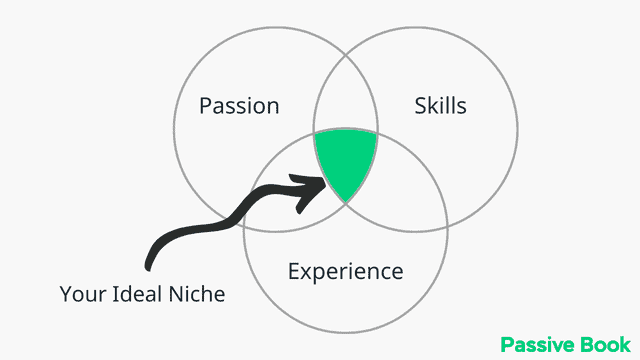
Choosing a niche is the step where you pick the one thing you’re going to dedicate all your time, energy, and probably a few therapy sessions to. It’s crucial, because without a niche, you’re just that person at the party trying to talk to everyone and ending up chatting with the houseplants. You need a focus. A game plan. A reason why people will actually care about what you’re offering.
To get started, do some market research. Look into what people are searching for and what products or services are popular. Tools like Google Trends can help you see how popular certain search terms are over time. You can also check social media for insights on what is trending.
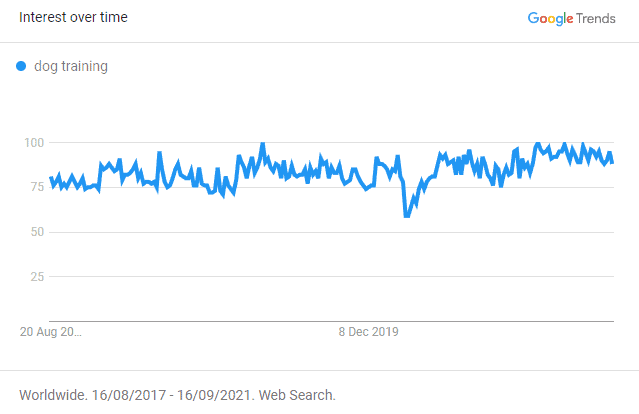
Another tool to consider is Meltwater Radarly, which uses AI to provide real-time data about consumer preferences. This can help you make informed decisions about your niche. For more detailed market data, you can use Statista, which offers useful charts to help you understand trends better.
Gather feedback directly from potential customers using tools like SurveyMonkey or Typeform to create surveys. This feedback can guide your decisions on what products or services to offer.
Finally, don’t forget about the competition. Because if there’s one thing better than coming up with your own brilliant ideas, it’s stealing I mean, “taking inspiration” from others. Tools like SpyFu can show you what keywords your competitors are using, so you can either follow in their footsteps or avoid the minefield entirely. It’s like having a cheat sheet, but legal. (Probably.)
Once you’ve got all this nailed down – your niche, your keywords, your soul-crushing customer feedback, you’re ready to move forward. Congratulations, you’ve made it past step one of starting an online business! Only about 300 more steps to go.
Step 2: Conduct Market Research
Conducting Market Research, also known as “the part where you realize your brilliant idea may already exist, and you’re late to the party.” But don’t worry, because even if you are late, you can still grab the last slice of pizza… if you know where to look.
Conducting market research is like peeking into the minds of your potential customers. This step helps you understand what they want and need. Use surveys or social media to gather insights into their preferences.
Next, think about pricing strategies. Determine how much customers are willing to pay for your products or services. Analyzing competitors, like Amazon, can help you see the prices of similar items, enabling you to set fair prices that attract buyers. If their prices are rock bottom and you can’t compete, maybe add a special feature or throw in a free virtual hug. Whatever it takes to make your offer stand out while still, you know, paying the bills.
Speaking of your customers, do you know who they are? Are they tech-savvy millennials who get all their news from TikTok, or are they retirees trying to figure out how to reset their Wi-Fi? Are they impulse buyers, or do they do twelve hours of research before spending $5? Knowing who your audience is will save you from accidentally targeting your grandma’s bridge club with ads for the latest gaming PC. (Although, hey, maybe they’re into that. You never know.)
Tools like Google Trends will become your best friend, showing you what’s hot and what’s not in real time. This helps you avoid the awkward moment when you realize you’re trying to sell flip phones in the age of foldable smartphones.

So, in summary: market research is your chance to make educated decisions, avoid terrible ideas, and increase the likelihood that you won’t be crying over unsold inventory of your artisanal cat sweaters. Even if your treasure chest is guarded by a million other competitors, at least now you know how to swing the sword. Or at least how to price the sword competitively on Amazon.
Step 3: Create a Business Plan
Creating a business plan sounds intimidating, doesn’t it? You’re probably imagining a 40-page document with five-year projections, competitive matrices, and organizational charts. Good news: you don’t need that nightmare.
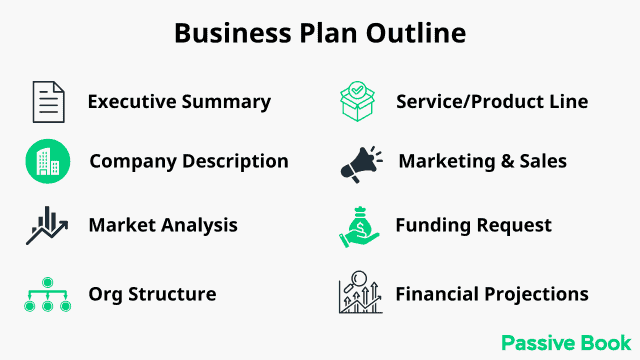
What you need is a lean business plan – a simple framework that validates your idea and maps your path to your first sale. Start by testing demand in 48 hours with a landing page, interviewing 10 potential customers, and pre-selling to 3-5 people before building your full product. This validation becomes the foundation of your plan, not lengthy projections based on assumptions.
Use our Business Plan Template below to create your Online Business Plan:
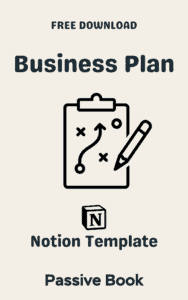
Free Online Business Plan Notion Template
Your plan should cover your target market (narrow niche beats broad appeal), revenue model and pricing, marketing strategy (pick one or two channels where you’ll consistently show up), and financial projections. Fair warning: you’ll underestimate startup costs by 30%. Expect 3-6 months to your first dollar of revenue, and 12-18 months to reach $1,000 monthly if you’re working 5-15 hours weekly around a day job.
Create a 90-day action plan with concrete milestones – not vague goals like “build audience,” but measurable targets like 100 email subscribers or your first paying customer. Your business plan should help you move forward, not keep you stuck in planning paralysis.
Step 4: Choose Your Business Structure
Choosing the right business structure is like picking the perfect pair of shoes for a long hike. You wouldn’t wear flip-flops to climb a mountain, right? (Unless you’re into extreme sports or bad decisions.) The same logic applies here—your business structure is what’s going to carry you through this entrepreneurial journey, so you want to make sure it fits just right. And, ideally, doesn’t give you blisters (liability and taxes).
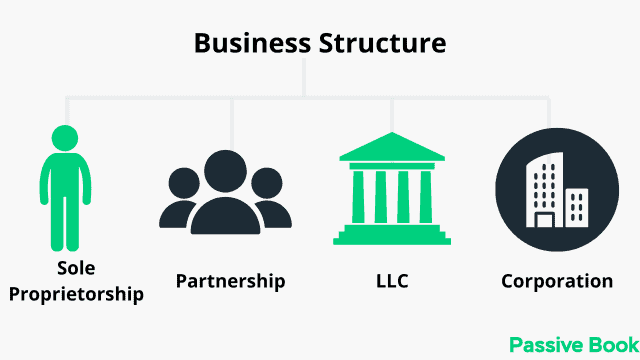
Sole proprietorship: One choice is a sole proprietorship, the simplest option. You’re the boss, the employee, and the entire HR department rolled into one. It means you own the business by yourself, getting all the profits but also taking on all the risks. Meaning if your business goes belly-up, your creditors might come knocking on your door asking for your favorite coffee mug and that sweet flat-screen TV.
Partnership: Another option is a partnership, where two or more people run the business together, sharing the profits, risks and responsibilities. Make sure to have a clear agreement to avoid problems later.
Limited Liability Company (LLC): You might also consider forming a Limited Liability Company (LLC), which gives you the benefits of both a sole proprietorship and a corporation. With an LLC, your personal assets are protected, meaning that if your business has debts, they cannot take your personal belongings.
Corporation: Lastly, there’s the option of a corporation, a more complex structure. A corporation is a separate legal entity, meaning it can sue or be sued. It also has more rules and requirements but offers strong protection against personal liability. But be warned: running a corporation comes with a lot more paperwork, rules, and maybe a secret handshake or two. You’ll be dealing with more regulations and might need a legal dictionary just to keep up. On the plus side, you get to use phrases like “I’m a CEO” without anyone questioning it.
So, how do you choose? Well, think about how much risk you’re willing to take, how you want to be taxed, and how much you enjoy filling out paperwork (if it’s zero, I’m with you). Each option has its perks and pitfalls, so it’s worth doing a little soul-searching—or, better yet, talking to a professional, like an accountant or a business lawyer. Trust me, it’ll save you a lot of sleepless nights spent Googling “what happens if my business fails and I’m broke?”
Ultimately, picking the right business structure is about finding what works for your unique situation. It’ll shape everything from your day-to-day operations to how much you pay in taxes, so don’t rush it. Take your time, get some advice, and make sure your business is wearing the right pair of shoes for the journey ahead. After all, you’ve got miles to go.
Step 5: Register Your Business
Registering your online business is like planting a flag in the digital world. First, secure your business name, which is how customers will know you. Choose a name that reflects your brand. Then, you need a domain name, which is the web address people will use to find you online. You can purchase a domain name through registrars like NameCheap.
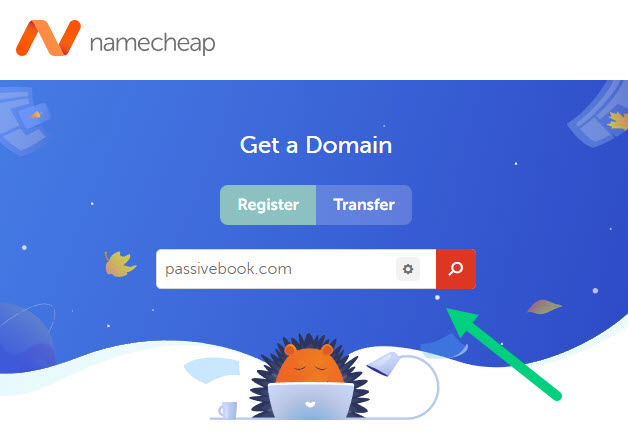
Check if your name is available by searching online to see if someone else is using it. If the name is taken, think of another one. It’s important to have a unique name to stand out.
Once you secure your name and domain, register your business, usually with your local government. The requirements can vary by location, and you may need to fill out forms and pay a fee. This step helps protect your business, ensuring no one else can use your name.
After registration, create a privacy policy – that thing no one reads but everyone has to have. Explain how you will handle customer information, building trust with your audience.
You’re also going to need a separate bank account for your business because mixing personal and business finances is like using the same toothbrush for yourself and your dog – messy, confusing, and just plain wrong. Plus, when your business takes off and you’re raking in the millions (fingers crossed), you’ll want to keep that cash flow in check. Also, it helps when it’s tax season, and your accountant doesn’t burst into tears.
Step 6: Build Your Website
Building a website is like creating your very own digital storefront. It’s where potential customers can find you and learn about what you offer.
First, choose a platform for your website. Popular options like WordPress and Shopify help you create a site without needing to know how to code. They also provide tools to make your site user-friendly, meaning visitors can find what they’re looking for quickly.
Make sure your site is mobile-friendly unless you want your visitors to play “pinch and zoom” until they get frustrated and leave.
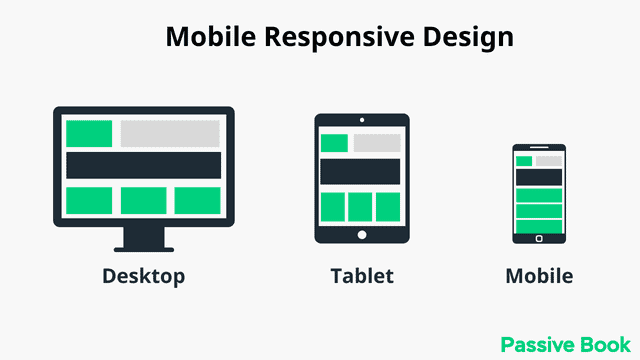
Security is also crucial. Protect your customers’ information, including their email addresses and credit card details. Using secure payment options builds trust with your customers.
Lastly, think about your website’s design. Good web design can improve the customer experience, including clear images, easy navigation, and quick loading times. You can also add features like an email list sign-up or links to your social media. These tools help you connect with your audience and grow your business.
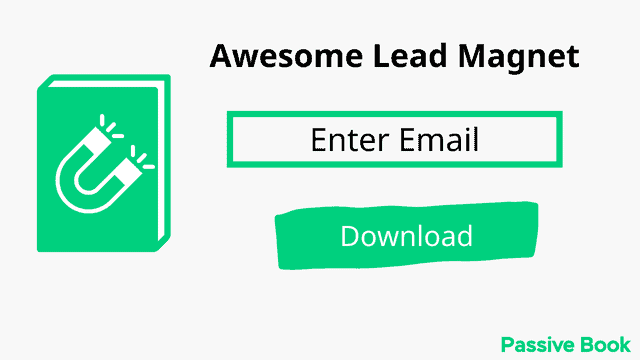
So there you have it. Building a website is the foundation of your online empire. Get it right, and you’ll have people flocking to your virtual doorstep. Get it wrong, and you’ll have tumbleweeds rolling across your homepage. No pressure.
Step 7: Comply With Legal Requirements
Running a successful online business means following legal steps. First up: licenses and permits. These vary depending on where you live and the kind of business you’re running. You can’t just waltz in and start selling stuff online without the proper paperwork—well, you can, but then you’d better be ready to test out prison Wi-Fi. Selling products? You might need a seller’s permit. Offering services? You may need a specific license to prove you know what you’re doing, unlike that one guy on Craigslist who “fixes” sinks and ends up flooding your bathroom.
You’ll also need an Employer Identification Number (EIN), like a social security number for your business, helping with taxes and opening a bank account. You can get an EIN from the IRS website, essential for business owners who want to keep their personal and business finances separate.
For online businesses, having a privacy policy is crucial. This policy tells customers how you handle their information, and a clear privacy policy builds trust with your potential customers. You can find templates online to help you create one. You can use a privacy policy generator like Termly for this.

Ensure you follow all local and federal laws, including understanding online selling rules and consumer protection laws. For example, if you run an online store like Amazon, your products must meet safety standards. Also, you’ve got to know the rules around refunds and returns, because people will try to return things for the most absurd reasons. “I didn’t realize the shirt was blue-blue.”
Taking care of the legal stuff isn’t glamorous, but it’s necessary if you don’t want to end up in legal hot water while chasing your entrepreneurial dreams. Plus, once you’ve checked off all those legal boxes, you can get back to the fun stuff.
Step 8: Develop a Marketing Strategy
If you want your online business to take off, develop a marketing strategy. Focus on digital marketing methods, including SEO, social media marketing, and email marketing, to create a strong online presence that builds credibility and attracts potential customers.
Social media platforms like Facebook, Instagram, and Twitter allow you to engage with potential customers, sharing updates about your products or services.
You can also throw money at these platforms for paid ads to magically beam your products into the feeds of people who’ve never heard of you but will suddenly feel like they need your stuff.
Email marketing is another effective strategy, allowing you to create an email list of interested customers. Sending regular newsletters keeps your audience informed, sharing special offers, new products, or helpful content. Automated emails can also help you stay organized, sending them to your customers at the right time to increase sales chances.

Search engine optimization (SEO) is vital for your online presence, helping your website appear in search results when people look for products or services like yours.
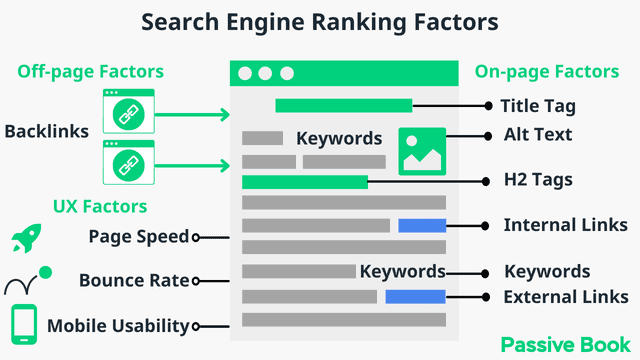
The trick is combining all these strategies into one unstoppable digital marketing plan. It’s like assembling your own Avengers team, but instead of saving the world, you’re saving your business from drowning in a sea of online competition.
Step 9: Launch Your Business
Launching your online business is just the first step. This is that magical moment where all your hard work finally pays off—or, doesn’t.
First, monitor your performance, keeping an eye on how well your business is doing. Sales rolling in? Fantastic! Zero traffic on your website? Not so fantastic. But don’t panic. Tools like Google Analytics will help you see how many people stumbled onto your site, either by accident or because of your marketing efforts. Understanding your audience means you can create content that speaks to their souls, or at least convinces them to click “buy now” more than “meh, later.”
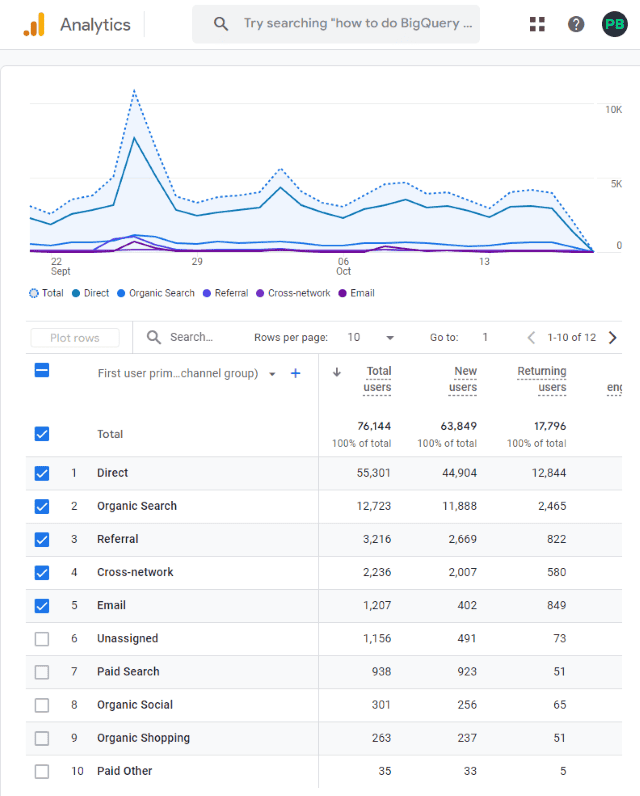
Next, adjust your strategies as needed. If something isn’t working, change it. Maybe your email marketing needs a boost. Consider using social media platforms too, sharing updates and engaging with your audience to build brand awareness.
Next up, it’s time to sit down and have a heart-to-heart with your business model. Are you selling physical products? Great—enjoy your new side hustle of spending half your life at the post office. Offering online courses instead? Welcome to the land of recording awkward videos and wondering if your voice always sounded like that. Each model has its quirks and nightmares, so make sure you’re still in love with the one you chose, or at least willing to tolerate it like a bad rom-com.
As you launch, prioritize customer experience, making it easy for customers to buy from you. Ensure your website is user-friendly. Good customer service is important too, so respond to questions quickly.
You launched your online business. But this is just the start. Rome wasn’t built in a day, and neither is your online empire.
Profitable Online Business Ideas
There are many exciting ways to make money online, each offering unique benefits and fitting different skills and interests. Let’s explore some of the most profitable online business ideas you can consider.
Dropshipping
Dropshipping is the magical world where you sell stuff you don’t even have! It’s like running a store, but without the clutter, the stress, or the need to rent out a storage unit. Instead, you sell products you’ve never seen, touched, or even know exist. Welcome to the future, where you’re basically a middleman, but in a way that makes you feel like an entrepreneurial genius.
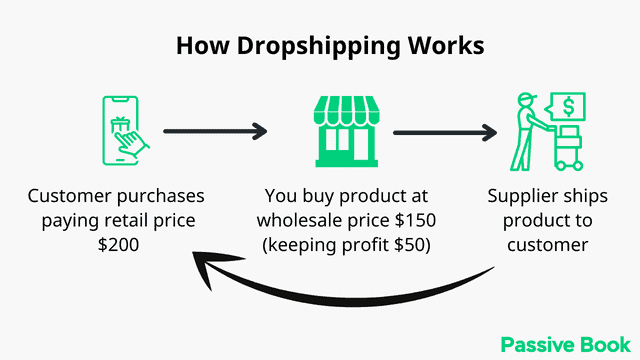
When a customer orders a product from your online store, you buy it from a supplier who ships it directly to the customer, so no storage or shipping worries.
Many successful niches exist in dropshipping, like the fashion industry. People love buying clothes online, and electronics is another great niche, with folks always hunting for the latest gadgets and accessories. Fitness products also do well, with more people wanting to stay healthy, making items like workout gear and supplements good sellers.

Starting a dropshipping business can be a smart choice for new business owners. You can test different products without high costs and reach potential customers through social media and email marketing, helping grow your customer base and increase brand awareness. To succeed, conduct market research to know what products people want. Setting up an online store is easy with a website builder, allowing you to create a user-friendly site to sell your products.
In dropshipping, focus on customer experience, as providing excellent customer service can lead to repeat buyers. It’s worth creating a solid marketing strategy to drive traffic to your online store, using platforms like Google Ads and social media to reach your target audience effectively.
Print on Demand
Print on demand is a fantastic way to start an online business, allowing you to create and sell custom products without holding inventory. You can personalize items like t-shirts, mugs, and posters with your own designs, letting you express your creativity while making money.
Platforms like Printful and Redbubble help you set up your store, handling printing and shipping for you. You just need to focus on designing your products and marketing them to your audience.
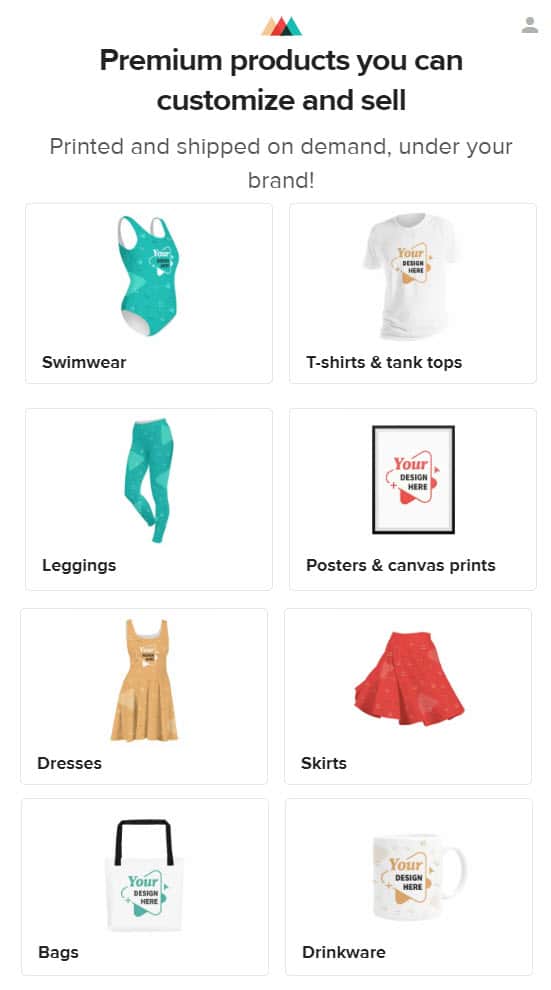
Personalization is key in print on demand, allowing you to choose colors, graphics, and text to make your items unique, attracting more potential customers. Of course, having an audience would help you actually sell these masterpieces. Social media is your best friend here. Plaster your designs on Instagram, Pinterest, or wherever people still pretend not to be doom-scrolling.
Starting a print on demand business is simple—use a website builder to create your online store. Ensure your site is easy to navigate, as good web design improves the customer experience and can lead to higher conversion rates. Remember to use search engine optimization to help people find your store online.
In summary, yes, Print on Demand is an awesome, flexible way to dive into the world of online business, especially if you’re like me and allergic to upfront costs. Just remember, success takes some work. With the right strategy (and some marketing wizardry), you could build a little empire of mugs and hoodies that people will proudly show off, while you sip your coffee and bask in the glow of entrepreneurial glory.
Affiliate Marketing
Affiliate marketing is getting paid to do what you already do—recommend stuff. You know that one friend who always has the best restaurant picks, and you wonder how they know all the cool spots before you? Well, imagine every time you hit up their suggestion, they get a little kickback. That’s affiliate marketing in a nutshell, except instead of restaurants, it’s products. And instead of your friend, it’s you, and the kickback is cash, not just gratitude for helping someone avoid a bad dinner.
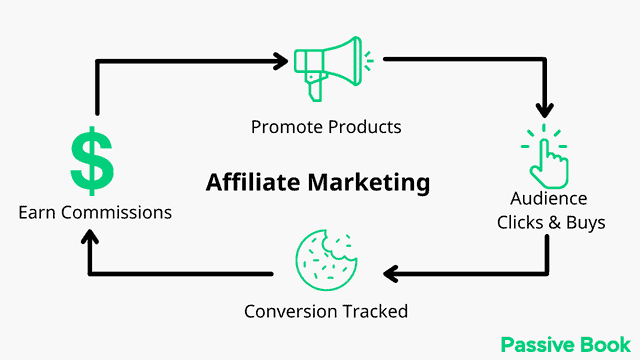
When you share a product and someone buys it through your link, you get a commission, making it a great way for online business owners to make money without creating their own products.
The affiliate marketing industry is huge, expected to reach around $12 billion annually. This makes it a popular choice for many, with commissions ranging from 5% to over 50% for digital products, leading to a nice income if you promote the right products to your audience.
To start, find affiliate programs that fit your niche, with websites like Amazon offering affiliate programs allowing you to earn money by sharing their products.
Create high-quality content that attracts potential customers, whether through blog posts, videos, or social media posts. Including affiliate links in your content can help you earn more commissions. But here’s the thing: you can’t just spam links everywhere like you’re throwing confetti. Each program has its own rules, so read those terms of service (or at least skim them—nobody expects you to actually enjoy reading legal jargon).
Virtual Assistant Services
Virtual Assistant services are becoming increasingly popular, as many small business owners need help with tasks like managing emails, organizing schedules, and handling customer inquiries. As more businesses operate online, the need for virtual assistants grows.
As a virtual assistant (or VA, if you’re feeling fancy), you help small business owners. Good virtual assistant services allow business owners to focus on what they do best, growing their business without getting bogged down in everyday tasks.
You can offer different services as a virtual assistant, like social media management, which involves posting updates, replying to comments, and growing a brand’s online presence. Content creation is another option, including writing blog posts or designing graphics.
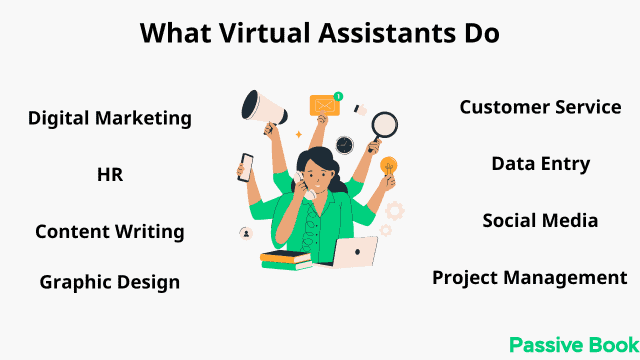
Starting a virtual assistant service is a great online business idea, requiring minimal investment. All you need is a computer, a good internet connection, and skills in digital marketing.
As for finding clients? They’re practically everywhere. Small businesses are multiplying like rabbits, and they need all the help they can get. Social media, freelancing platforms, or just whispering “I can help with that” at your local coffee shop might land you your next gig.
As a virtual assistant, you can work with multiple clients at once, helping you earn a steady income. You can also set your own hours, offering flexibility that many find appealing.
If you want to start your own virtual assistant service, consider your skills and conduct market research to see what services are in demand.
Frequently Asked Questions
Many people have questions about online businesses, wanting to know how to start and what to expect. Let’s explore some common questions and clear up any confusion.
What Kind of Online Business Is Most Profitable?
Content Creation, Ecommerce, Dropshipping, Affiliate Marketing and Digital Products are all profitable online businesses. But results will vary based on the niche chosen.
What Are the Initial Costs to Start an Online Business?
The initial costs to start an online business typically include buying a domain, setting up website hosting, and designing the website which can be done in under $100. You may also need to budget for marketing tools, such as social media ads or email marketing services. Depending on the business type, inventory or software subscriptions could add to these costs.
What Next?
We have come to the part where we remind you that you’ve just spent precious minutes of your life learning how to dive headfirst into the murky waters of internet entrepreneurship. You’re welcome, by the way.
Now, if you have any burning questions I didn’t answer—like “Will starting an online business actually make me rich?” (spoiler: it depends on your definition of ‘rich’) drop them in the comments. I
I’d love to hear what kind of online venture tickles your entrepreneurial fancy. Are you all about e-commerce, dreaming of running your own virtual store like some kind of digital Rockefeller? Or maybe online courses are more your thing—because who wouldn’t want to get paid to talk about stuff they know, am I right? Or, hey, maybe you’ve got some wild new idea that’ll make us all billionaires—just let me know when to invest.
Oh, and before you go off to start that business (or, you know, take a nap), be sure to hit those social media share buttons. Share this masterpiece with your friends, family, and that one friend who’s always talking about passive income. You know the one.
Share this post with your friends & followers:
